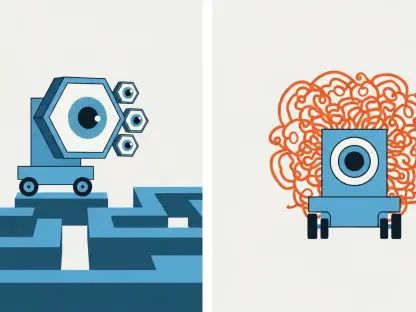In today’s interconnected world, AI chatbots have become an integral part of both business and daily life, facilitating interactions across numerous sectors and demonstrating rapid advancements in capabilities. Despite their impressive functionalities, including handling customer inquiries, assisting with online transactions, and providing real-time information, the susceptibility to jailbreaking poses a significant risk to their integrity. This vulnerability challenges developers and regulators to keep up with the fast-evolving tactics employed by users to exploit these systems.
Analysis of AI chatbot technology reveals a dynamic landscape marked by rapid evolution and diverse implementations across various industries. From customer service to healthcare, chatbots streamline operations and enhance customer experiences. Industry giants like Microsoft and Google have invested heavily in AI development, shaping market trends and influencing the direction of future innovations. However, the ethical concerns and regulatory frameworks governing these developments require careful consideration to prevent misuse.
Current and Emerging Trends in AI Technology
AI technology is evolving at an unprecedented pace, with sophisticated algorithms and deep learning models broadening chatbot applications. This technological renaissance has infused new life into AI-driven interactions while fundamentally altering consumer behavior. As users become more accustomed to chatbot interfaces, demand grows for smarter, more responsive systems. Industry players are exploring innovative safeguarding measures to enable secure AI interactions.
The AI marketplace is buoyed by significant growth projections, with adoption rates indicating an upward trajectory in both chatbot usage and associated security enhancements. Recent analytics highlight widespread deployment across various sectors, underpinned by increasing reliance on AI technologies. As market dynamics continue to evolve, industry analysts forecast sustained expansion, with security frameworks playing a pivotal role in supporting this growth.
Challenges and Complexities in AI Chatbot Security
The inherent vulnerabilities within chatbot systems present significant challenges for developers and security professionals. As the complexity of threat landscapes intensifies, ensuring robust protections for AI models becomes increasingly difficult. Developers grapple with regulatory pressures and ethical dilemmas while striving to balance innovation with security.
The necessity for innovative security measures is apparent, paying attention to adaptive strategies that address both current and emerging threats. Implementing comprehensive safeguards is essential for mitigating vulnerabilities, ensuring AI systems remain resilient against potential attacks. The successful deployment of such strategies can provide a pathway toward enhancing overall system integrity.
Regulatory Landscape Impacting Chatbot Development
AI chatbot operations are subject to stringent laws and standards that govern their development and deployment. Compliance with these regulations is non-negotiable, requiring developers to meet rigorous security protocols to protect user data and privacy. The regulatory landscape continues to evolve, impacting industry practices and prompting organizations to realign their security measures.
Adhering to comprehensive regulatory standards presents a monumental task. Developers must navigate complex compliance requirements while ensuring that their security protocols are capable of countering sophisticated attacks. The dynamic nature of regulatory changes necessitates ongoing adaptation, fostering an environment where security measures evolve in tandem with technological progress.
Future Directions in AI Chatbot Security
The AI field is on the cusp of transformative change, with emerging technologies set to redefine security paradigms. Innovations such as advanced blockchain integrations and quantum computing promise to reshape how AI systems manage potential threats. As consumer expectations and security demands grow more sophisticated, developers will need to tailor their strategies accordingly.
Understanding consumer trends is crucial for aligning future security measures with user needs. As preferences evolve, developers can leverage insights to guide the implementation of robust protection mechanisms. The convergence of technological innovation, regulatory adherence, and heightened consumer awareness together outlines a strategic framework for future advancements in AI chatbot security.
Conclusion and Recommendations
The study underscored the profound need to bolster AI chatbot security, revealing key vulnerabilities and spotlighting the urgent challenge of safeguarding against manipulation. The dynamic interplay between advancing technology and regulatory standards demands proactive engagement from developers. Introducing advanced filtering systems and adapting to consumer trends can significantly enhance security postures.
To secure AI chatbots effectively, stakeholders in the industry must prioritize collaboration, embracing cross-sector partnerships for increased resilience. Investment in innovative technologies can empower developers to preemptively address vulnerabilities, improving security measures and fostering trust among users. With strategic foresight and continuous improvement, the industry can pave the way for ethical and responsible AI deployment, ensuring that advancements serve to enrich society without compromising security or ethics.









